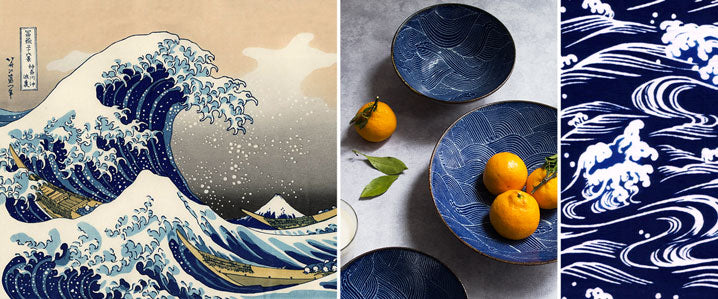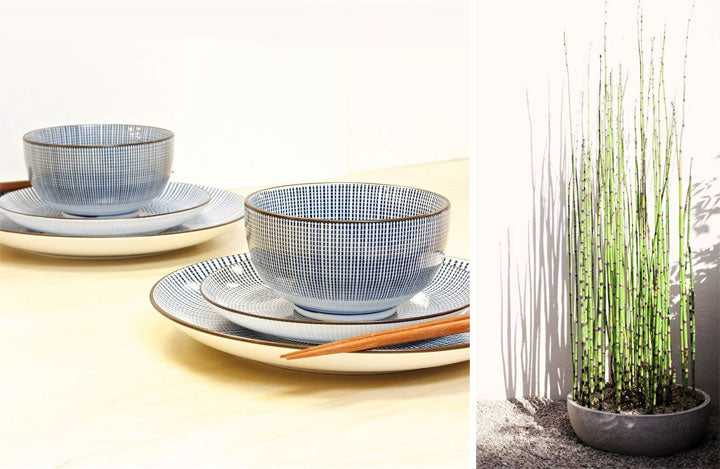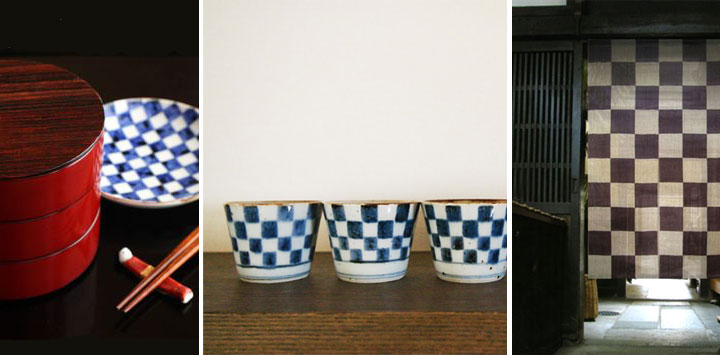
ARANAMI(荒波)
Evolved from Katsushika Hokusai's iconic woodblock prints of seascapes, this water wave pattern was much favored in the Edo period, during which the country enjoyed enormous economic growth and cultural development for over a century. Depicting raging waves of the sea, the Aranami pattern is powerful and visually striking. It has been widely used on textiles, knitting, and ceramics.

TOKUSA(十草)
With blue and white lines radiating from the center, this intricate design of the Tokusa pattern is inspired by the reeds of a type of grass grown in Japan - the "ten grass". From the Edo period till today, Tokusa and its many variations have stayed one of the most loved patterns for Japanese ceramics.

KARASUKA (唐草)
Karasuka literally means plant motifs from China. However, such foliage-scroll patterns most likely originated in Central Asia, India, Persia, or Arabia. The patterns are characterized by continuous and repetitive vines, flowers and leaves. They are commonly seen on textiles, ceramics, metal work, and lacquerware, and sometimes as architectural detailing.

SEIGAIHA (青海波)
Seigaiha means "blue sea and waves". It presents the vast expanse of ocean with calm, blue waves. This alternating wave crest pattern is one of the most traditional geometrical patterns in Japan, and is commonly used as a background for the main motif to enrich the entire design. With the wish for "everlasting peace & quiet", Seigaiha is also a popular motif of auspicious omen.

ICHIMATSU(市松)
A geometric pattern of dark and light squares alternating, Ichimatsu was named after an 18th-century Kabuki actor, Sanokawa Ichimatsu, who wore a pair of pants in this pattern during his performances. Ichimatsu is one of the most widely used patterns in Japan - it can be found in fabrics, lacquerware, ceramics, gardens, interiors, as well as architectural decorations.

